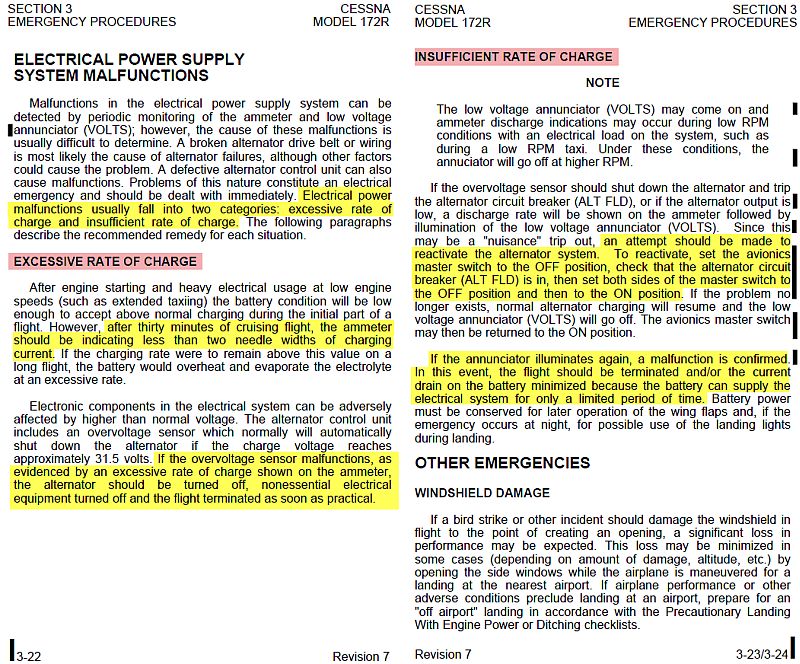eetrojan
Pattern Altitude
I'm reading about electrical malfunctions on pages 3-22 to 3-23 in the POH for a Cessna 172R.
For an "insufficient rate of charge" (ammeters shows discharge, VOLTS lit), it says to recycle the alternator by turning the avionics master off and cycling both sides of the master switch.
For an "excessive rate of charge" showing on the ammeter after 30 minutes of cruise flight, it says to turn off the alternator and non-essential equipment, and then land as soon as possible. It doesn't suggest recycling.
Wouldn't it also be good to recycle the alternator given an excessive rate of charge and see if that fixes it? If not, why?
Thanks!

For an "insufficient rate of charge" (ammeters shows discharge, VOLTS lit), it says to recycle the alternator by turning the avionics master off and cycling both sides of the master switch.
For an "excessive rate of charge" showing on the ammeter after 30 minutes of cruise flight, it says to turn off the alternator and non-essential equipment, and then land as soon as possible. It doesn't suggest recycling.
Wouldn't it also be good to recycle the alternator given an excessive rate of charge and see if that fixes it? If not, why?
Thanks!

Last edited:

